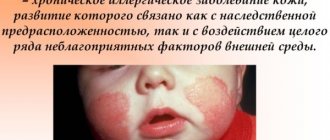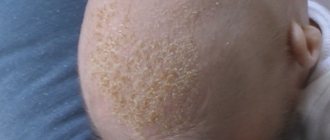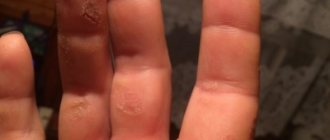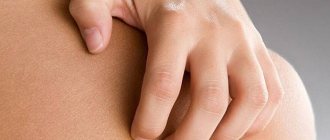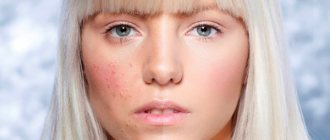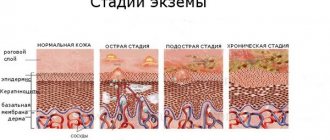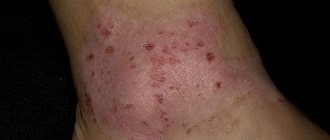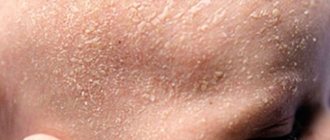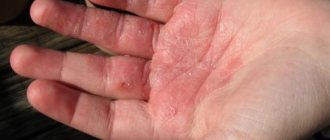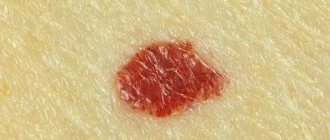Allergic dermatitis is an inflammation of the skin resulting from exposure to certain substances. The inflammatory process causes blood vessels to dilate, which leads to increased blood flow. The liquid seeps into the tissue. Therefore, the skin becomes red, swollen and accompanied by unpleasant symptoms. Allergic dermatitis in children (see photo below) in 20% of cases occurs against the background of asthma and rhinitis. Let's look at what this disease causes and what symptoms are characteristic of it.
What is allergic dermatitis in children?
Dermatoallergoses (atopic dermatitis in a child) is a pathology that often manifests itself in the 1st year of life. Children's skin allergies, irritations, infectious rashes, diaper rash, diaper dermatitis: a baby's delicate skin is exposed to a colossal number of irritants.
Young inexperienced parents, noticing atopy on the body of their infants, do not always attach importance to it. In fact, any allergic dermatitis, especially the atopic type, cannot be ignored. If you notice the first signs of allergic dermatitis, you should immediately consult a doctor.
Allergic dermatitis in children, photo There are several forms of the disease, which can be discussed in more detail in the table.
| Form | Age | Peculiarities |
| Infantile allergic dermatitis | From birth to 3 years | It is usually hereditary. Often, childhood atopic dermatitis is accompanied by a number of other pathological conditions - hay fever, food allergies, conjunctivitis, eczema on the face and body |
| Children's allergic dermatitis | From 3 years to 7 years | Most often it occurs against the background of previous diseases or after contact with an unusual allergen that has an excessively aggressive effect on the baby’s body. |
| Adolescent allergic dermatitis | Over 7 years old | The atopic form occurs least often in adolescents. Against the background of chronic recurrent allergic dermatitis, a number of secondary diseases usually develop |
Typical for children
In addition to the above reasons, dermatitis on the legs of children appears due to the following factors:
- not fully formed digestive system;
- excess protein foods and sweets;
- use of artificial mixtures;
- violation of the thermal regime.
During breastfeeding, a woman needs to control her diet. You should not eat foods that lead to allergies, as this can cause dermatitis in the baby. It is necessary to reduce consumption or completely eliminate the intake of:
- citrus fruits;
- honey;
- strawberries;
- black currant;
- smoked, spicy, spicy, over-salted foods.
It is important to be careful with eggs, red fish, seafood, caviar, legumes, and chocolate. Nursing mothers who care about the health of the child are prohibited from drinking alcohol and carbonated drinks.
Skin dermatitis on the legs of a school-age child or teenager appears when preparing for exams due to severe nervous tension, lack of sleep and depression. At this time, parents should provide him with a fully balanced diet with all nutritional components, vitamins and minerals. It is also important to monitor your sleep patterns, rest, and time spent in the fresh air.
Causes of allergic dermatitis
Allergic dermatitis , treatment of which should begin as early as possible, occurs for various reasons. Most often, the hereditary factor is combined with unfavorable environmental factors, and a total imbalance occurs in the body.
Allergic dermatitis in the form of spots
If the mother and father of the baby have hypersensitivity to various irritants, then the probability that a child will be born with atopic dermatitis exceeds 85%.
| Causes | Formation mechanism |
| Food allergies | Allergic dermatitis, food-type dermatitis, typically manifests itself in the first months of a baby’s life. Atopic dermatitis due to the incorrect diet of a pregnant woman, as well as if the mother consumed highly allergenic foods during breastfeeding. Another significant reason is previous viral diseases of the esophagus in infants 1–6 months of age. |
| Difficult pregnancy | The causes of predisposition to atopic dermatitis at the time of bearing a child are very diverse: the threat of miscarriage, exacerbation of serious chronic diseases, the apathetic state of a woman, past infectious diseases, fetal hypoxia, which greatly affects all aspects of infant health. |
| Diseases suffered by the child himself | Intestinal dysbiosis (long and debilitating), atonic colitis or gastritis, enterocolitis, helminthic infestations. Such ailments have a particularly negative effect on the body if parents ignored the problem for a long time or engaged in dubious self-medication with folk remedies. |
| Constant contact with dangerous allergens | So-called chronic atopic dermatitis can be caused not only by food allergens, but also by irritants migrating through the air (pollen, house mites, household chemicals, aerosols, cosmetics). Incorrect medicinal effects on a child can also lead to the development of dermatitis: abuse of children's cosmetics, incorrectly selected medications, incorrect use of certain medications. |
| Stress experienced by the child | Often, atopic dermatitis develops against the background of an unstable psycho-emotional state of the child. An exacerbation of the pathological process can be caused not only by an encounter with an allergen, but also by nervous overexcitation. |
| Passive smoking | If an allergic person is constantly surrounded by smokers and is not protected in any way from cigarette smoke, the risk that atopic diseases will appear is extremely high. |
| Unfavorable environmental situation in the region where the child lives | “Dirty air” is extremely dangerous for children. Transport and industrial facilities can pollute the environment. If background radiation is increased or intense magnetic radiation is present, this can also have a detrimental effect on the general condition of the child (both an infant or one-year-old child, and relatively adult adolescents). |
| Seasonal weather changes | A sharp change in weather entails the risk of seasonal illnesses, infectious and viral diseases. Because of them, other problems arise - the immune system suffers, which leads to the development of atypical allergic reactions. |
Home care
If your child has allergies, you should bathe him properly. It is best to use filtered water for this. In addition, it must additionally settle. First of all, this applies to those families who use centralized water supply.
Experts do not recommend taking a bath longer than 20 minutes. In cases where there is no exacerbation of the disease, the use of hypoallergenic agents is permitted. During the acute period, soaps and gels should be abandoned.
After bathing, the skin should be slightly blotted with a towel, but not rubbed. This may lead to a deterioration in the child's condition.
Due to the fact that public swimming pools use chlorine for disinfection, children with allergies are strictly prohibited from visiting such establishments.
You should not allow your child to sweat excessively, as such an environment is a good place for the development of dermatitis. In the room where the baby is constantly located, the temperature should be 21 degrees Celsius.
General symptoms
As you can see from the photo, dermatitis on a child’s legs does not look very pleasant. Moreover, the symptoms do not depend on specific causes. Usually the disease manifests itself in the form of:
- red spots;
- dry skin;
- small cracks;
- swelling;
- rash.
There are several types of dermatitis, which differ from each other in symptoms. Accurate diagnosis is required to properly treat the disease and eliminate the root cause.
Signs of dermatitis in children
Not every parent knows what atopic dermatitis looks like and what causes it in children of different ages, but those who constantly experience these unpleasant phenomena can determine the origin of the rash virtually unmistakably.
The main symptoms of allergic dermatitis in children:
- Severe itching.
- An unbearable burning sensation that is difficult for a small child to cope with.
- Skin itching and general discomfort intensify at night, preventing children from falling asleep fully.
- At the time of exacerbation, the dermal tissue becomes covered with weeping red spots.
- Contact atopic dermatitis is manifested by nodular rashes (mainly serous papules and miniature vesicles appear on the cheeks).
- If the integrity of the vesicles is damaged, erosions, crusts, and total peeling of the epidermal tissue appear on the skin, which does not go away for a long time.
- Severe diathesis (cheeks, chin, and forehead areas turn red and peel).
- If parents do not treat the rash for a long time, a pustular lesion of the skin occurs.
Locations affected by allergic dermatitis
Parents do not always know how to treat allergic dermatitis in children or use inappropriate medications for treatment. As a result, allergic dermatitis without treatment transforms into a chronic atopic form, which is even more difficult to cure.
This condition is characterized by deep deformations in the lower eyelids (Morgan's sign), sparse hair on the back of the head, and the presence of areas of skin with constant peeling and redness.
Varicose
This type of disease appears due to poor circulation in the veins of the legs. Since the venous valves do not close tightly, there is stagnation of blood, sweating of exudate through the stretched thinned walls of the vessels and the appearance of edema. Then the tissue trophism of this area is disrupted, causing the following symptoms to appear:
- thinning, dryness, flaking of the skin;
- redness of the skin with a purple tint;
- the appearance of foci of inflammation;
- increase in local temperature;
- the occurrence of severe itching.
If therapeutic measures are not taken at this stage of the development of the disease, the situation may worsen. And dermatitis will progress to the next stage, in which:
- brown scaly spots appear;
- bubbles filled with liquid form;
- after opening them, the wet areas dry out, but yellow crusts and areas of hyperpigmentation remain.
In the last stage of varicose dermatitis, trophic ulcers appear on the legs, which lead to severe pain. They are able to increase in diameter and affect the deep layers of skin and muscles. After pathogenic microorganisms penetrate into them, purulent inflammations form, which causes tissue death and sepsis.
Varicose dermatitis often appears in adults who are overweight, have a genetic predisposition, or have an inactive lifestyle. But this disease is also diagnosed in children. The disease develops in them due to stress, a sedentary lifestyle, poor nutrition, when the diet does not contain routine and other components responsible for the tone of the walls of blood vessels.
Diagnostics
Diagnosis begins with an external examination and anamnesis. For the doctor, the location of the inflammatory process, the presence of itching, burning, and the location and nature of the patient’s work are of great importance.
Among laboratory diagnostic methods, a clinical blood test is of primary importance. A high level of eosinophils is the main indicator of an allergic reaction.
To accurately determine the allergen, skin patch tests are performed - suspected irritants are applied to the skin and the reaction is observed.
During the remission stage, you can do patch tests - allergens are applied to sticky paper strips, they are attached to the back, and removed after 2 days. After removal of the plates, allergic reactions quickly disappear, but the doctor will be able to accurately determine the cause of the disease.
The consequences of dermatitis are the addition of a secondary infection, eczema with purulent discharge, abscesses, phlegmon. Therefore, dermatitis must be treated correctly; the problem should not be ignored.
Atopic
This type of disease is chronic and hereditary in nature. Having arisen in early childhood, it can manifest itself throughout life. During the acute stage, the following are observed on the skin of the legs:
- erythema;
- erosion;
- swelling;
- wet spots or crusts.
Often the disease is complicated by the appearance of secondary infections, which are associated with the entry of pyogenic microflora into open wounds. If the disease becomes chronic, then:
- deep cracks appear on the soles;
- the affected skin thickens;
- a skin pattern appears.
At all stages, severe itching occurs, accompanied by psychological discomfort. Children become nervous, hot-tempered, and chronic weakness occurs.
Types of allergic dermatitis in children
To select the most effective medicine for the treatment of allergic dermatitis in children of different ages, it is necessary to take into account a lot of nuances: the course of the disease, features of manifestation, the presence of secondary pathologies, the degree of tissue damage. Allergic dermatitis is characterized by a typical localization associated with the age of the baby.
Let's look at the details in the table.
| Age of the child with allergic dermatitis | How does allergic dermatitis manifest? | Typical localization of rashes in a child with allergic dermatitis |
| From birth to 6 – 10 months | Erythema on the skin of the cheeks and forehead, resembling a milky scab, serous papules, and erosive surfaces after opening. Total peeling of the skin with intensification around the rash. | The scalp, ears, cheeks, forehead skin, lower segment of the chin, elbow and knee bends. |
| From 10 months to 1.5 years | Redness of the skin with swelling and the appearance of exudate, a typical allergic syndrome | Mucous membranes of the mouth, larynx, nasopharynx, digestive tract, urinary tract. |
| From 1.5 to 3 years | Dryness and thickening of the epidermal tissue against the background of an intensification of the pattern. | Feet, neck, flexion areas, wrists. |
| Over 3 years old | Ichthyosis and neurodermatitis. | Folds of the surfaces of the upper and lower extremities. |
In children 1–2 years of age, allergic dermatitis can occur as a seborrheic or nummular type. In the first case, scales appear on the head from the first days of life. Young mothers do not know what it is and may apply inappropriate products to it, further exacerbating the problem. The nummular type is manifested by skin rashes with crusts.
Facial dermatitis: how to treat symptoms
Symptoms of the disease that appear in the facial area cause many problems. Red spots, itching, peeling, cause an uncomfortable physical condition. The psychological situation is much worse - difficulties with communication during working hours, at home, the inability to stay in public places. What is the cause of the disease, how to get rid of it - we have to figure it out.
The appearance of unpleasant signs in the facial area indicates serious problems. Symptoms signal that dermatitis has occurred - inflammation of the skin. Depending on the form of the disease, the signs have characteristics. The following manifestations are observed during the period:
- adjust the stages - scales, scabs, severe itching;
- acute – swelling, burning, pain, blisters, appearance of necrotic areas.
In the absence of timely treatment, the disease rapidly progresses and becomes chronic. You can look at the photo to see what symptoms of dermatitis on the face arise. Characteristic features of this period:
- the appearance of inflamed areas;
- rash in the forehead, mouth, nose;
- peeling of the skin;
- severe itching;
- hypersensitivity of the epidermis;
- pain in joints, head, skin;
- dyspnea;
- weakness;
- labored breathing;
- dizziness;
- tearfulness.
Not everything is completely clear about the origin of this disease - many questions remain. Dermatologists note the following causes of dermatitis:
- heredity;
- hormonal disorders;
- nervous shocks;
- contact with animals;
- plants that cause an allergic reaction;
- stress;
- burns;
- unsuitable food products;
- taking medications;
- poor nutrition.
Dermatologists note the main factors that can provoke the development of the disease. These include:
- use of cosmetics with allergens;
- long-term use of hormonal drugs;
- the use of creams containing fragrances, petroleum jelly;
- gastrointestinal diseases;
- Unhealthy Lifestyle;
- chronic infections;
- inappropriate skin care;
- prolonged fatigue;
- alcohol abuse;
- using fluoride toothpaste.
Young children, unlike teenagers, are more often susceptible to this disease. It's scary that a baby can suffer and not tell about it. Facial dermatitis occurs for many reasons. There are external factors that provoke the disease:
- inappropriate children's cosmetics;
- polluted air;
- the effect of chemicals;
- lack of hygiene;
- animal hair;
- lack of sleep;
- Construction Materials;
- plant allergens;
- influence of adult cosmetics.
Dermatitis in a child can also be caused by internal causes. Pathology occurs as a result of:
- weakened immunity;
- consumption of food allergens;
- diabetes mellitus;
- taking medications;
- genetic predisposition;
- improper treatment of dermatosis;
- incorrect introduction of complementary foods;
- gastrointestinal diseases;
- lack of vitamins;
- endocrine diseases;
- infections.
Kinds
Depending on the nature of the course, the reasons for its appearance, and the distinctive features of treatment, the types of the disease differ:
- Contact – occurs during direct interaction with allergens. It is characterized by local inflammation - where there was contact with the irritant.
- Seborrheic is caused by excessive sebum production due to hormonal disorders.
Dermatologists classify the following types of disease:
- Oral – a disease that develops in the mouth area. Dermatitis on the lips is caused by taking hormones and gastrointestinal pathologies. Symptoms often occur during pregnancy.
- Allergy is a chronic disease that begins a few days after infection. Development is provoked by repeated contact with the stimulus.
- Atopic is the most difficult type to treat and often has a chronic form.
This disease provokes an increase in the activity of the saprophyte fungus. It is found in humans and is harmless until favorable conditions arise for its reproduction. It is difficult to suspect the onset of the disease. The following can cause rapid growth of fungus and seborrheic dermatitis on the face:
- decreased immunity;
- endocrine system problems;
- excessively oily skin;
- stressful situations;
- diabetes;
- chronic lack of sleep;
- vitamin deficiency;
- bad habits.
Seborrhea on the face begins with redness and peeling of individual areas of the skin. The development of the disease is characterized by the following symptoms:
- pustular rashes – in the oily form;
- white, yellow flaky, itchy scales - when dry;
- merging of individual points in the area of the nose, eyebrows, cheekbones and forehead into papules;
- constant itching;
- a strong burning sensation;
- nervous irritation;
- sleep disturbance.
Atopic
The disease has another known name – eczema. The exact reasons why it can form are unknown to medical science. The disease can lie dormant in the body for many years and one day manifest itself. The following factors can provoke dermatitis:
- heredity;
- allergic causes;
- unfavorable environment;
- stress;
- gastrointestinal pathologies;
- artificial feeding of infants.
The peculiarity of the manifestation of the atopic form of the disease is unbearable itching, intensifying in the evening. It is accompanied by scratching of the skin and does not subside with the action of the medicine. Dermatitis manifests itself by:
- wet spots;
- severe redness;
- bubbles;
- peeling;
- thinning eyebrows;
- deepening of the folds of the eyelids;
- burning;
- swelling;
- insomnia.
Allergic
Allergens cause this form of the disease. Once in the blood, they bind to proteins and provoke increased sensitivity to these substances in the body. Allergens can be:
- household – particles of wood, paper, dust;
- epidermal - feathers, animal hair;
- food – products, additives;
- infectious – streptococci, fungi;
- medicinal;
- chemical - paints, cosmetics, poisons, synthetic fabrics;
- plant – pollen, grass;
- parasitic antigens.
Allergic dermatitis on the face begins with the appearance of skin rashes, swelling, and bright red spots. During the course of the disease, symptoms arise that become more active as the disease develops:
- tearfulness;
- runny nose;
- headache;
- weakness;
- severe rash;
- scales that begin to itch;
- blistering rashes;
- crusts;
- skin peeling;
- scars.
Contact
This form of the disease is characterized by the appearance of symptoms at the point of contact of the skin with the irritant. Contact dermatitis on the face causes local interaction with allergens:
- elements of synthetic clothing;
- inappropriate cosmetics;
- jewelry containing nickel;
- latex pillow;
- medicines;
- care products.
This type of disease includes sun allergy, which results in dermatitis under the eyes. After contact with the irritant, an allergic reaction begins. Next, an inflammatory process develops, which is accompanied by vivid symptoms:
- redness;
- the appearance of blisters and ulcers;
- severe itching;
- peeling.
Treatment
When symptoms of the disease appear, it is important to consult a dermatologist promptly. Early diagnosis and proper treatment will give a favorable prognosis for recovery. How to get rid of dermatitis on the face? It is important not to self-medicate so that the disease does not become chronic. Treatment of dermatitis on the face must be carried out comprehensively. The method requires:
- avoid interaction with allergens;
- follow a diet;
- use ointments and creams externally;
- carry out drug therapy;
- carry out physical therapy;
- apply traditional medicine recipes.
Ointment
The disease is effectively treated if facial dermatitis ointment is applied to problem areas of the skin. Dermatologists prescribe non-hormonal agents:
- Redivit – produces anti-inflammatory, antipruritic effects;
- Pantoderm – treats dry skin, eliminates cracks;
- Gistan – has anti-allergic, anti-inflammatory effects;
- Naftaderm - helps with pain, is an antiseptic;
- Ketoconazole – acts against fungi.
If these medications do not have a therapeutic effect, in cases of severe, long-healing inflammation, hormonal ointments are prescribed. Their use should be carried out under the supervision of a doctor due to numerous side effects. Dermatologists recommend:
- Celestoderm;
- Flucinar;
- Fucicort;
- Advantan;
- Akriderm;
- Desitin;
- Actovegin;
- Solcoseryl.
Cream
The cream helps eliminate the symptoms of the disease. The product must be applied according to the instructions. Popular drugs:
- Eplan – relieves swelling;
- D-Pathenol – softens the skin;
- Skin-Cap, Exoderil - have an antifungal effect;
- Fenistil – eliminates itching;
- Thymogen – relieves redness;
- Losterin – has an antibacterial, analgesic effect;
- Elidel – has an anti-inflammatory effect;
- Zinocap – exhibits an antibacterial effect.
Pills
The mandatory treatment for complex cases includes tablets. They have a special effect:
- antihistamines - relieve irritation, itching - Loratadine;
- antibacterial, antiviral – Gentamicin;
- immunosuppressants - remove skin reactions - Chlorbutin;
- corticosteroids – anti-inflammatory, hormonal – Prednisolone;
- vitamin complexes - general strengthening.
How can I reduce my risk when using corticosteroids?
In order to minimize the risk from the use of topical hormonal agents, you must adhere to several mandatory rules.
- They should be applied to the skin before using emollients, otherwise the fatty film will not allow the medicine to pass to the skin.
- Corticosteroids are selected exclusively by a doctor depending on the severity of the baby’s disease.
- Only weakly active corticosteroids are applied to the neck and face.
- Corticosteroids are suitable for treating new rashes that have appeared within two days.
- It is recommended to treat inflamed areas with hormonal agents no more than twice a day.
- Before treatment, be sure to consult a pediatrician!
Diet for the treatment of dermatitis in children
Compliance with diet is the most important condition for the effective treatment of allergic dermatoses in children of all age categories.
Parents sometimes despair, wondering whether the disease can be cured at all. However, it is the correct diet that sometimes determines how quickly an allergic disease will disappear and whether a relapse will occur.
The menu for a child 2–5 years old suffering from allergic dermatitis looks approximately as shown in the table.
| Breakfast | Dinner | Afternoon snack | Dinner | Before bedtime | |
| 1st day | Buckwheat porridge, Dutch cheese, tea without sugar, a slice of black bread with butter | Potato soup with sour cream, meat puree, boiled rice, compote | Fruits | Steamed meat cutlets, mashed potatoes with sour cream, compote or tea | Kefir or unsweetened yogurt |
| 2nd day | Liquid rice porridge, cottage cheese, unsweetened tea or compote, black bread with butter | Cabbage soup with fresh cabbage, steamed meat cutlets (preferably rabbit or turkey), pasta with butter | Fruits, yogurt | Cabbage salad with butter, boiled potatoes with sour cream, boiled or baked meat with herbs | Kefir |
| 3rd day | Oatmeal, tea, cheese, bread and butter | Potato soup with sour cream, steamed meatballs, compote | Fruits | Lazy cabbage rolls with rice and dietary meat, children's cottage cheese with fruit, compote | Yogurt |
| 4th day | Mashed potatoes with butter, cabbage salad, cheese, tea | Vegetarian barley soup, steamed meat cutlets, cabbage salad | Fruit or yogurt | Boiled potatoes, steamed meat balls, salad, tea | Curdled milk |
The menu is quite arbitrary, but from it it becomes clear that a child can eat tasty and healthy, even suffering from allergic dermatosis of any origin.
Children over 3 years old should receive a variety of foods, depending on their origin, vitamin and chemical composition. Adequate nutrition will give you strength and allow you to quickly cope with the problem.
Important Tips
In order for the child to suffer less due to dietary restrictions and unpleasant symptoms of the disease at the time of treatment, parents must create the most favorable and comfortable conditions for the baby at home.
Here are some valuable tips:
- All fabrics that come into contact with the baby's skin must be absolutely hypoallergenic. It is better to completely abandon synthetic underwear and textiles.
- A child's sleep should be sound and healthy. It is worth buying an orthopedic mattress and pillows. Orthopedic accessories correspond to the anatomical features of the child’s body and will allow the baby to sleep better, even if itching and pain prevent this.
- You can bathe your baby, but use decoctions of medicinal herbs (chamomile, calendula, oak bark, string) instead of regular water.
- Do not rub irritated skin with a towel, or wear clothes that are too tight and uncomfortable, which can cause additional irritation of the skin (sometimes it is poor-quality clothing that provokes the development of allergic rashes).
If a small patient suffering from allergic dermatitis is provided with proper care, coping with the disease will be much easier. This applies to both tired parents and the exhausted baby.
Prevention measures
- You should not bathe your baby too often, as this helps wash away the protective fat layer from the surface of the skin and dries it out, creating excellent conditions for the proliferation of pathogenic bacteria.
- You can add decoctions of string or chamomile to the bathing water. These herbs have anti-inflammatory and antiseptic effects.
- The child's living conditions must comply with established standards. It is better if the baby has a separate room from birth.
- Cleaning, ventilation and air humidification should be mandatory procedures.
- Cosmetics and household chemicals intended for everyday child care must be of high quality and free of fragrances, parabens and other toxic substances.
- The atmosphere in the apartment should be calm and friendly, since stress is one of the main factors provoking the development of allergic dermatitis and other skin diseases.
- Ban smoking in the apartment if there are smokers in the family.
If a child is diagnosed with atopic dermatitis, it is important to start treatment on time, since the chronic stage of the disease is fraught with serious complications.
Compliance with hygiene rules, a hypoallergenic diet and timely therapy will help to avoid unpleasant consequences and maintain the baby’s health, regardless of his age.
